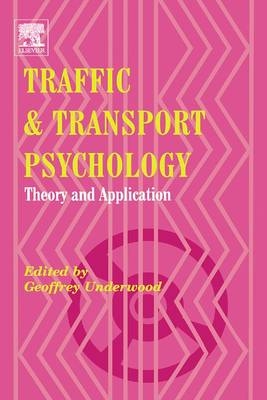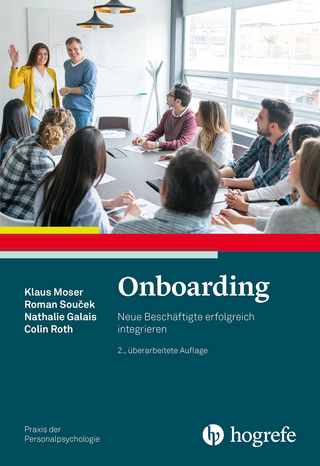
Traffic and Transport Psychology
Elsevier Science Ltd (Verlag)
978-0-08-044379-9 (ISBN)
- Titel ist leider vergriffen;
keine Neuauflage - Artikel merken
Just as our transport systems become more and more important to our economic and social well-being, so they become more and more crowded and more at risk from congestion, disruption, and collapse. Technology and engineering can provide part of the solution, but the complete solution will need to take account of the behaviour of the users of the transport networks. The role of psychologists in this is to understand how people make decisions about the alternative modes of transport and about the alternative routes to their destinations, to understand how novice and other vulnerable users can develop safe and effective behaviours, how competent users can operate within the transport system optimally and within their perceptual and cognitive limitations. The contributions to this volume address these issues of how the use of our transport systems can be improved by taking into account knowledge of the behaviour of the people who use the systems. Topics discussed include driver training and licensing, driver impairment, road user attitudes and behaviour, enforcement and behaviour change, driver support systems, and the psychology of mobility and transport mode choice. This work will be of value not only to psychologists but to all transport professionals interested in the application of psychology to traffic.
Preface. Prologue. Keynote Lecture Traffic psychology in a (new) social setting.
(R.D. Huguenin). Vulnerable Road Users I: Pedestrians an Cyclists.
Using epidemiological data to address psychological questions about pedestrian behaviour. (G. Dunbar). Rural and urban children's understanding of safety and danger on the road. (K. Pfeffer). A thematic analysis of children and young adults' perceptions of roadway risk. (J. Underwood et al.). Are differences in children's travel reflected in their cognitive maps? (J. Paskins). Criteria for cyclists' everyday route choice. (C. Hagemeister et al.). Vulnerable Road Users II: Older Road Users. The elderly pedestrian and social representations. (R.M. Sant et al.). Elderly drivers' hazard perception and driving performance. (Kazumi Renge et al.). Assessment and decision criteria for driving competence in the elderly. (H. Middleton et al.). The Rookwood driving battery and the older adult. (Pat McKenna et al.). Vulnerable Road Users III: Novice Drivers. What do novice drivers learn during the first months of driving? Improved handling skills or improved road user interaction? (T. Bjørnskau, F. Sagberg). "Trainer" project: pilot applications for the evaluation of new driver training technologies. (D. Nalmpantis et al.). Profile of the British learner driver. (G.B. Grayson, L.F. Crinson). Effects of lowering the age limit for driver training. (F. Sagberg and N.P. Gregersen). Emotion and Personality. The role of attributions and anger in aggressive driving behaviours. (E. F. Valliéres, J. Bergeron, R.J. Vallerand). Developing the Driver Anger Scale. (M.J.M. Sullman, P.H. Baas). Effects of emotions on optimism bias and illusion of control in traffic. (J. Mesken, M.P. Hagenzieker, J.A. Rothengatter). Big five personality traits as the distal predictors of road accident involvement. (N. Sümer, T. Lajunen, T. Özkan). Automation and Information Systems. Keynote Lecture Mind over matter: who's controlling the vehicle and how do we know? (O. Carsten). Adaptation effects in an automated car following scenario. (Eva-Maria Eick, G. Debus). Evaluation of a DGPS driver assistive system for snowplows and emergency vehicles. (M.E. Rakauskas et al.). ADAS' acceptance and effects on behaviour; the consequences of automation. (K.A. Brookhuis, D. de Waard). Age, previous knowledge and learnability of driver information systems. (I. Totzke, M. Hofmann, Hans-Peter Krüger). Automated driving doesn't work without the involvement of the driver. (L. Nilsson). The role of expectations in interaction behaviour between car drivers. (M. Houtenbos et al.). Driving Performance I: Control and Workload. Keynote Lecture Cross modal effects in transportation. (J.A. Groeger). Regulation of speed and time-headway in traffic. (M. Wille, G. Debus). Speed, traffic complexity and visual performance: a study on open road. (L.M. Nunes, M.A. Recarte). Effects of motorway lighting on workload and driving behaviour. (J.H. Hogema et al.). A study of conversation performance using mobile phones while driving.
(T. Luke et al.). Traffic psychology theories: towards understanding driving behaviour and safety efforts. (H. Summala). Driving Performance II: Perception and Awareness. Driver's perception of self explained road infrastructure and architecture. (O. Carsten, L. Zakowska, H. Jamson). The effect of vehicle navigation systems on the formation of cognitive maps. (G.E. Burnett, K. Lee). Mental representation of traffic signs: Role of sign complexity and semantic information. (C. Castro). Professional driver training and driver stress: effects on simulated driving performance. (L. Dorn). Does time slow down in a car crash? Danger, time perception and speed estimates. (P. Chapman, G. Underwood). Driving without awareness. (K. Karrer et al.). Prophylactic naps can reduce car accidents risk in shift-workers. (B. Mascialino et al.). Violation and Rehabilitation. Keynote Lecture Drivers and traffic laws: A review of Psychological theories and empirical research.
(D. Yagil). Why do drivers speed? (H.M. Wallén Warner, L. Åberg). Effects of speed cameras on driver attitude and behaviour. (S.G. Stradling, L. Martin, M. Campbell). What shall we do about speeding-education? (F.P. McKenna). Ways to rehabilitate drunken drivers in Germany-recruiting of clients, rehabilitation programs, evaluation.
(K. Müller). Setting up and assessing a commitment procedure in rehabilitation training courses for traffic regulation offenders in France. (P. Delhomme). Travel Demand Management and Travel Mode Choice. Keynote Lecture Changes of private car use in response to travel demand management. (T. Gärling). Childhood influences on adult travel mode choice. (M. Johansson). Temporary structural change: A strategy to break car-use habit and promote public transport. (Satoshi Fujii, T. Gärling). Epilogue. Keynote Lecture Traffic safety and road safety: separate realities. (J.A. Rothengatter). Name Index. Subject index.
| Verlagsort | Oxford |
|---|---|
| Sprache | englisch |
| Maße | 156 x 234 mm |
| Gewicht | 1030 g |
| Themenwelt | Sachbuch/Ratgeber ► Beruf / Finanzen / Recht / Wirtschaft |
| Geisteswissenschaften ► Psychologie ► Arbeits- und Organisationspsychologie | |
| ISBN-10 | 0-08-044379-6 / 0080443796 |
| ISBN-13 | 978-0-08-044379-9 / 9780080443799 |
| Zustand | Neuware |
| Haben Sie eine Frage zum Produkt? |
aus dem Bereich


